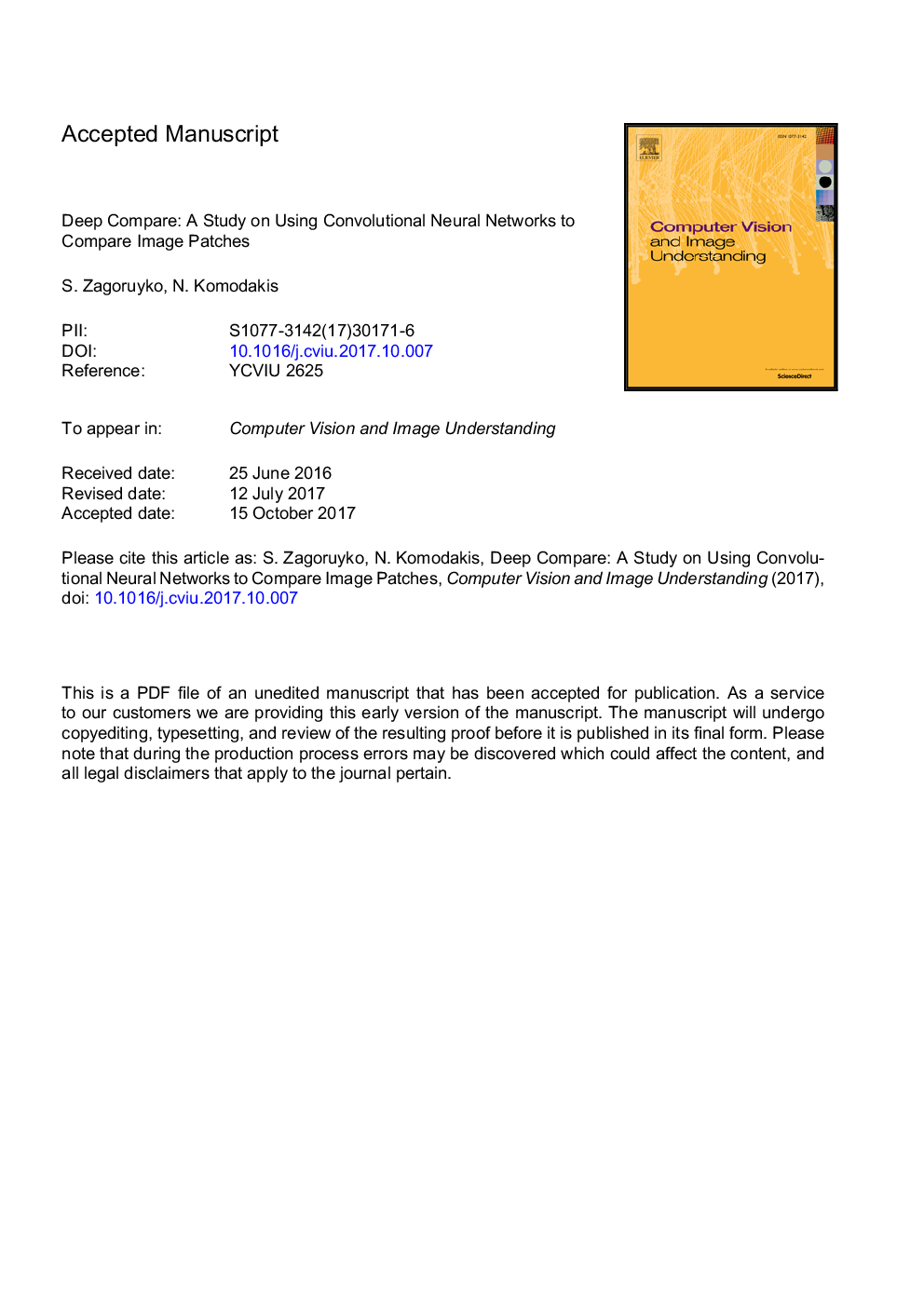| Article ID | Journal | Published Year | Pages | File Type |
|---|---|---|---|---|
| 6937474 | Computer Vision and Image Understanding | 2017 | 36 Pages |
Abstract
Comparing patches across images is probably one of the most fundamental tasks in computer vision and image analysis, that has given rise to the development of many hand-designed feature descriptors over the past years, including SIFT, that had a huge impact in the computer vision community. Yet, such manually designed descriptors may be unable to take into account in an optimal manner all the different factors that can affect the final appearance of image patches. On the other hand, nowadays one can easily gain access to (or even generate using available software) large datasets that contain patch correspondences between images. This begs the following question: can we make proper use of such datasets to automatically learn a similarity function for image patches ? Our goal in this work is to affirmatively address the above question. We show how to learn directly from image data (i.e., without resorting to manually-designed features) a general similarity function for comparing image patches. To encode such a function, we opt for a CNN-based model that is trained to account for a wide variety of changes in image appearance. To that end, we explore and study multiple neural network architectures, including novel NCC-networks, which are specifically adapted to this task. We show that such an approach can significantly outperform the state-of-the-art on several problems and benchmark datasets.
Related Topics
Physical Sciences and Engineering
Computer Science
Computer Vision and Pattern Recognition
Authors
S. Zagoruyko, N. Komodakis,
